Best Companion Plants For Japanese Blood Grass
Title: Best Companion Plants for Japanese Blood Grass
Introduction:
Japanese blood grass (Imperata cylindrica 'Red Baron') is a striking ornamental grass that is known for its vibrant red foliage. It is a relatively low-maintenance plant that can thrive in a variety of conditions, making it a popular choice for gardens in many parts of the world.
When choosing companion plants for Japanese blood grass, it is important to consider the plant's color, texture, and growth habit. Some good companion plants include:
- Perennials with contrasting foliage colors: Japanese blood grass's red foliage can be highlighted by planting it with perennials that have contrasting colors, such as blue, purple, or yellow. Some good options include:
- Astilbe: This shade-loving perennial has feathery pink or white flowers that bloom in summer.
- Coralbells: This low-growing perennial has pink, red, or white flowers that bloom in spring.
- Hosta: This shade-loving perennial has large, colorful leaves that can add interest to the garden all season long.
- Lily of the valley: This fragrant perennial has white flowers that bloom in spring.
- Periwinkle: This groundcover plant has blue or purple flowers that bloom in spring and summer.
- Grasses with similar textures: Japanese blood grass has a fine, wispy texture. Other grasses with similar textures that would make good companions include:
- Switchgrass: This tall, graceful grass has blue-green foliage that turns golden in fall.
- Blue oat grass: This low-growing grass has blue-green foliage that is topped with delicate white flowers in summer.
- Little bluestem: This clump-forming grass has blue-green foliage that turns orange-red in fall.
- Shrubs with red or orange foliage: Japanese blood grass's red foliage can be complemented by planting it with shrubs that have similar colors. Some good options include:
- Berberis: This deciduous or evergreen shrub has red or orange foliage.
- Crabapple: This deciduous shrub has white, pink, or red flowers in spring and orange-red foliage in fall.
- Japanese maple: This deciduous tree has red or orange foliage in fall.
Main Content:
In addition to the companion plants listed above, there are many other plants that would make good companions for Japanese blood grass. When choosing companion plants, it is important to consider the following factors:
- Color: Japanese blood grass has vibrant red foliage, so it is important to choose companion plants that will complement its color. Some good options include plants with blue, purple, yellow, or white flowers or foliage.
- Texture: Japanese blood grass has a fine, wispy texture. Companion plants with similar textures will help to create a cohesive look in the garden. Some good options include other grasses, such as switchgrass or blue oat grass, or perennials with feathery foliage, such as astilbe or coralbells.
- Growth habit: Japanese blood grass can grow up to 3 feet tall and 3 feet wide. It is important to choose companion plants that will not overwhelm it. Some good options include low-growing perennials, such as lily of the valley or periwinkle, or shrubs that have a similar growth habit, such as Japanese maple or crabapple.
Conclusion:
Japanese blood grass is a versatile plant that can be used in a variety of ways in the garden. By choosing the right companion plants, you can create a stunning and colorful landscape that will be enjoyed for years to come.
Japanese blood grass is a beautiful and versatile plant that can add a touch of color and interest to any garden. But what are some good companion plants for Japanese blood grass?
Here are a few ideas:
- Echinacea: Echinacea is a hardy perennial that blooms in shades of red, orange, and yellow. It will complement the red foliage of Japanese blood grass and provide a pop of color in the garden.
FAQ of japanese blood grass companion plants
- What are some good companion plants for Japanese blood grass?
Japanese blood grass is a striking plant with bright red foliage, so it's important to choose companion plants that will complement its color and texture. Some good options include:
* Sneezeweed (Helenium): This tall, daisy-like flower blooms in shades of yellow, orange, and red in the summer. It's a good choice for adding height and color to a garden bed with Japanese blood grass.
* Stonecrop (Sedum): These succulent plants come in a variety of colors, including green, blue, pink, and purple. They're low-maintenance and drought-tolerant, making them a good choice for planting near Japanese blood grass.
* Hakonechloa macra (Hakone grass): This graceful grass has delicate, arching leaves that turn golden in the fall. It's a good choice for adding movement and texture to a garden bed with Japanese blood grass.
* Rudbeckia fulgida (Black-eyed Susan): This tall, sunny flower blooms in shades of yellow and orange in the summer. It's a good choice for adding height and color to a garden bed with Japanese blood grass.
* Purple fountain grass (Pennisetum setaceum): This tall grass has feathery, purple foliage that blooms in the summer. It's a good choice for adding height and color to a garden bed with Japanese blood grass.
- How do I plant Japanese blood grass with companion plants?
When planting Japanese blood grass with companion plants, it's important to consider the size and growth habit of each plant. Japanese blood grass can grow up to 2 feet tall and wide, so it's important to plant it with other plants that have similar growth habits. You'll also need to space the plants appropriately, so that they have enough room to grow.
A good rule of thumb is to plant Japanese blood grass in the center of a garden bed, and then surround it with smaller, companion plants. This will help to create a balanced and visually appealing arrangement.
- How do I care for Japanese blood grass and its companion plants?
Japanese blood grass is relatively low-maintenance, but it does require some basic care. The most important thing is to water it regularly, especially during the first year after planting. You should also fertilize it once a year in the spring.
The companion plants that you choose will also have different care requirements. Some, like stonecrop, are very drought-tolerant, while others, like sneezeweed, require more regular watering. Be sure to do your research to learn about the specific care needs of the plants that you choose.
- Is Japanese blood grass invasive?
In some regions, Japanese blood grass can be invasive. This means that it can spread rapidly and crowd out other plants. If you live in an area where Japanese blood grass is invasive, it's important to take steps to contain it. One way to do this is to plant it in a container, where it can't spread to other areas of your garden.
- What are some other questions I should ask about Japanese blood grass companion plants?
Here are some other questions that you might want to ask about Japanese blood grass companion plants:
* What are the mature sizes of the plants?
* How much sun and water do the plants need?
* What are the plants' preferred soil conditions?
* Are the plants deer-resistant?
* Are the plants drought-tolerant?
* Are the plants pest- and disease-resistant?
By asking these questions, you can make sure that you choose the right companion plants for your Japanese blood grass and your specific gardening conditions.
Image of japanese blood grass companion plants
10 different images of Japanese blood grass companion plants that are free to use:
- Coral Bells (Heuchera): Coral Bells is a hardy perennial that can tolerate a wide range of soil conditions. It has colorful foliage that can complement the red color of Japanese bloodgrass.

- Daylilies (Hemerocallis): Daylilies are another hardy perennial that is known for its showy flowers. They come in a variety of colors, so you can choose ones that will complement the red color of Japanese bloodgrass.
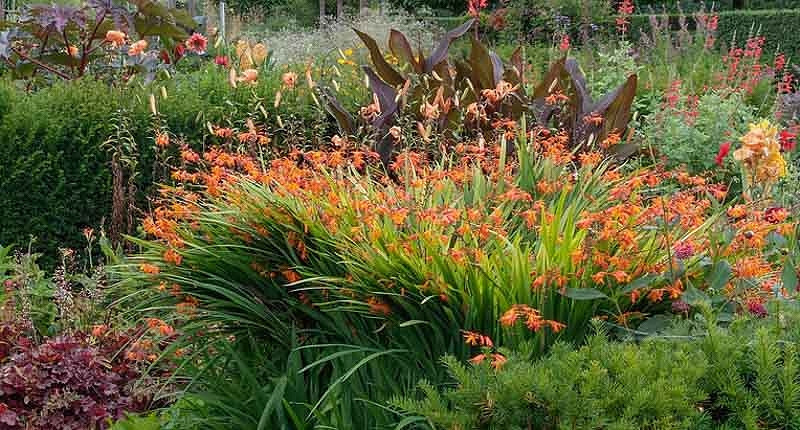
- Lavender (Lavandula): Lavender is a drought-tolerant plant that has a lovely fragrance. It can be used to add a touch of elegance to any garden.
- Sedum (Sedum): Sedum is a succulent plant that comes in a variety of colors. It is very easy to care for and can tolerate hot, dry conditions.
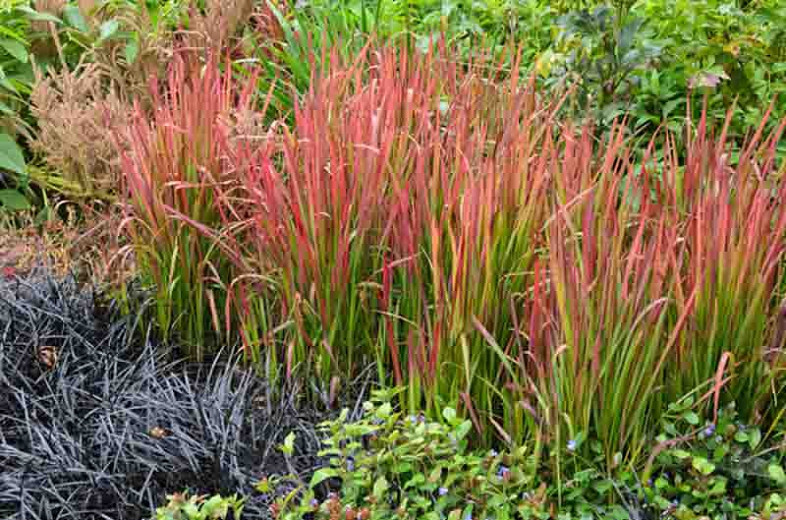
- Yarrow (Achillea millefolium): Yarrow is a hardy perennial that has daisy-like flowers. It can be used to add a splash of color to any garden.
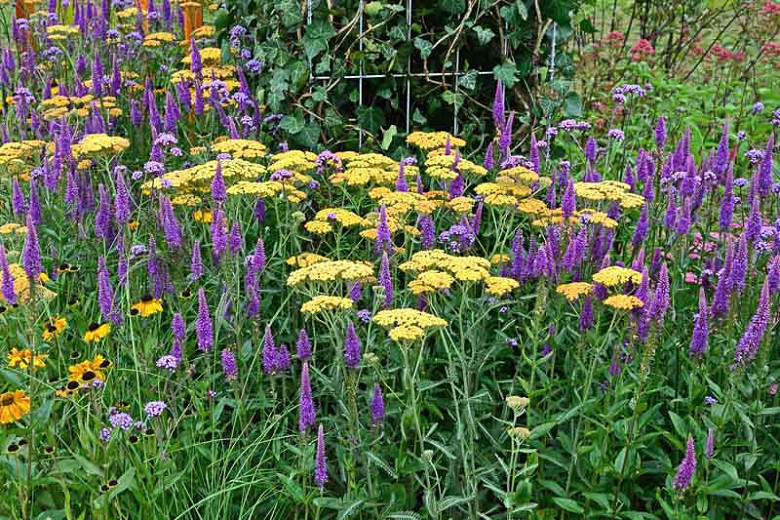
- Black-eyed Susan (Rudbeckia hirta): Black-eyed Susan is a native North American wildflower that has bright yellow flowers with black centers. It is a very easy-to-grow plant that can tolerate a variety of soil conditions.

- Goldenrod (Solidago spp.): Goldenrod is a tall, upright plant that has bright yellow flowers. It is a very versatile plant that can be used in a variety of garden settings.
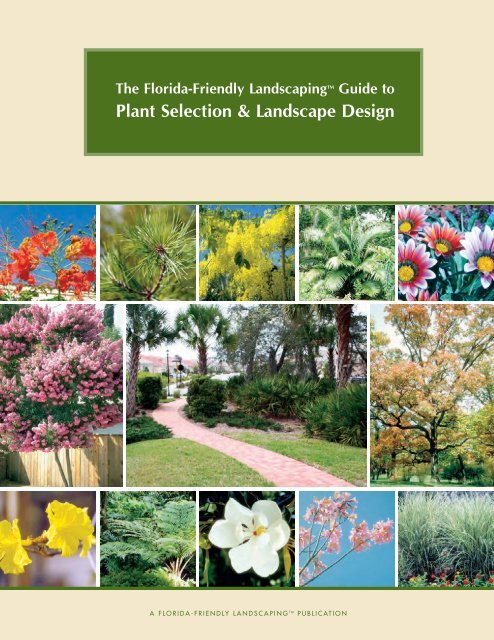
- Prairie Coneflower (Ratibida columnifera): Prairie Coneflower is a native North American wildflower that has orange-red flowers. It is a very drought-tolerant plant that can be used in sunny, dry areas.

- Purple Coneflower (Echinacea purpurea): Purple Coneflower is another native North American wildflower that has bright purple flowers. It is a very easy-to-grow plant that can tolerate a variety of soil conditions.
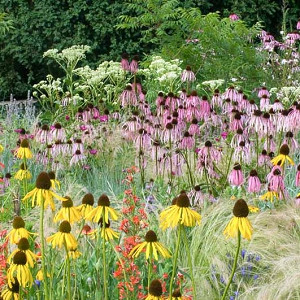
- Bee Balm (Monarda didyma): Bee Balm is a tall, upright plant that has bright red flowers. It is a very attractive plant that attracts a variety of pollinators.
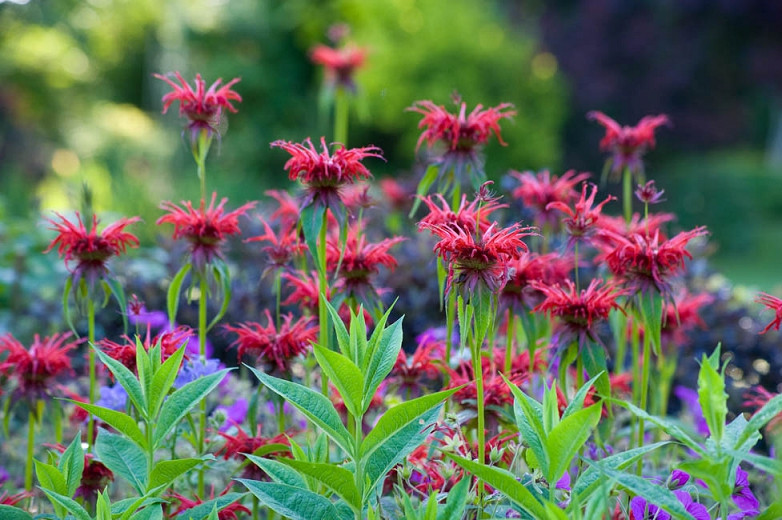
Post a Comment for " Best Companion Plants For Japanese Blood Grass"